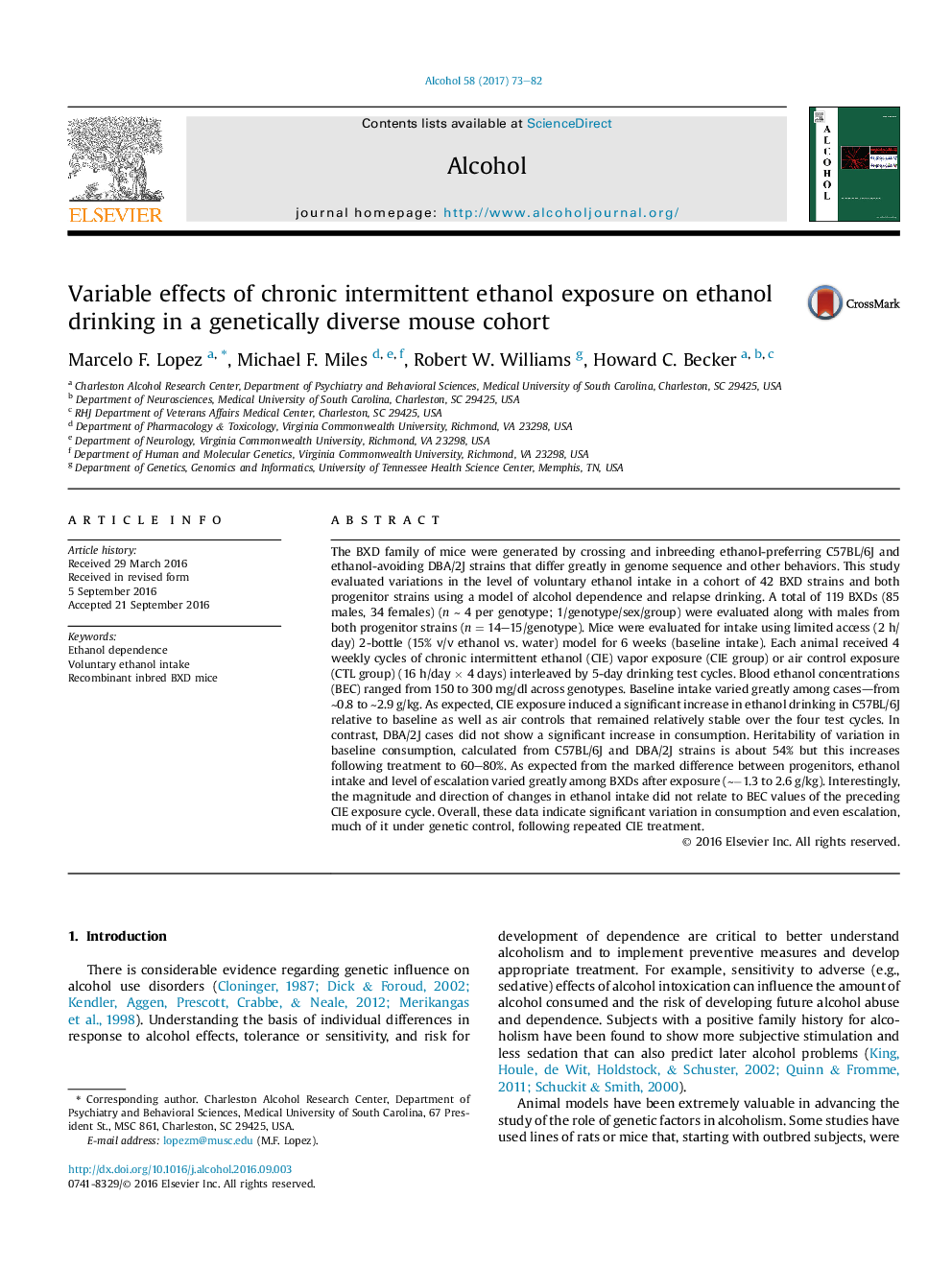| کد مقاله | کد نشریه | سال انتشار | مقاله انگلیسی | نسخه تمام متن |
|---|---|---|---|---|
| 5119759 | 1485971 | 2017 | 10 صفحه PDF | دانلود رایگان |
- CIE exposure induces changes in voluntary ethanol intake that vary between C57BL/6J and DBA/2J genotypes of mice.
- Heritability of variation is above 50% and increases following treatment.
- CIE and air control, exposure induces increases or decreases in ethanol intake across BXD genotypes.
- The increase or decrease in intake does not depend on BEC during CIE exposure.
The BXD family of mice were generated by crossing and inbreeding ethanol-preferring C57BL/6J and ethanol-avoiding DBA/2J strains that differ greatly in genome sequence and other behaviors. This study evaluated variations in the level of voluntary ethanol intake in a cohort of 42 BXD strains and both progenitor strains using a model of alcohol dependence and relapse drinking. A total of 119 BXDs (85 males, 34 females) (n â¼Â 4 per genotype; 1/genotype/sex/group) were evaluated along with males from both progenitor strains (n = 14-15/genotype). Mice were evaluated for intake using limited access (2 h/day) 2-bottle (15% v/v ethanol vs. water) model for 6 weeks (baseline intake). Each animal received 4 weekly cycles of chronic intermittent ethanol (CIE) vapor exposure (CIE group) or air control exposure (CTL group) (16 h/day Ã 4 days) interleaved by 5-day drinking test cycles. Blood ethanol concentrations (BEC) ranged from 150 to 300 mg/dl across genotypes. Baseline intake varied greatly among cases-from â¼0.8 to â¼2.9 g/kg. As expected, CIE exposure induced a significant increase in ethanol drinking in C57BL/6J relative to baseline as well as air controls that remained relatively stable over the four test cycles. In contrast, DBA/2J cases did not show a significant increase in consumption. Heritability of variation in baseline consumption, calculated from C57BL/6J and DBA/2J strains is about 54% but this increases following treatment to 60-80%. As expected from the marked difference between progenitors, ethanol intake and level of escalation varied greatly among BXDs after exposure (â¼â1.3 to 2.6 g/kg). Interestingly, the magnitude and direction of changes in ethanol intake did not relate to BEC values of the preceding CIE exposure cycle. Overall, these data indicate significant variation in consumption and even escalation, much of it under genetic control, following repeated CIE treatment.
Journal: Alcohol - Volume 58, February 2017, Pages 73-82
